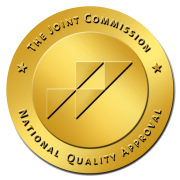CDC state data shows high costs due to excessive alcohol use
Costs mainly due to binge drinking
Excessive alcohol use causes a large economic burden to states and the District of Columbia, according to a new study released by the Centers for Disease Control and Prevention. Excessive alcohol use cost states and D.C. a median of $2.9 billion in 2006, ranging from $420 million in North Dakota to $32 billion in California. This means the median cost per state for each alcoholic drink consumed was about $1.91.
Binge drinking, which is defined as consuming five or more drinks on an occasion for men or four or more drinks on an occasion for women, was responsible for more than 70 percent of excessive alcohol use related costs in all states and D.C. The District of Columbia had the highest per-person cost ($1,662), while Utah had the highest cost per drink ($2.74). Furthermore, about $2 of every $5 in state costs were paid by government, ranging from 37 percent of the costs in Mississippi to 45 percent of the total costs in Utah.
Study authors found that costs due to excessive drinking largely resulted from losses in workplace productivity, health care expenses, and other costs due to a combination of criminal justice expenses, motor vehicle crash costs, and property damage. Across all states and D.C., excessive drinking costs due to productivity losses ranged from 61 percent in Wyoming to 82 percent in D.C., and the share of costs due to health care expenses ranged from 8 percent in Texas to 16 percent in Vermont.
“Excessive alcohol use has devastating impacts on individuals, families, communities, and the economy,” said CDC Director Dr. Tom Frieden, M.D., M.P.H. “In addition to injury, illness, disease, and death, it costs our society billions of dollars through reduced work productivity, increased criminal justice expenses, and higher healthcare costs. Effective prevention programs can support people in making wise choices about drinking alcohol.”
Economic cost estimates for states and D.C. were based on a previous CDC study that found that excessive drinking cost the United States $223.5 billion in 2006. Costs were assessed across 26 cost categories using data from several sources, including the Alcohol-Related Disease Impact Application, the National Epidemiologic Survey on Alcohol-Related Conditions, and the National Survey on Drug Use and Health.
Researchers believe that the study’s findings are underestimated because it did not consider a number of other costs, such as those due to pain and suffering by the excessive drinker or others who were affected by the drinking.
“It is striking to see most of the costs of excessive drinking in states and D.C. are due to binge drinking, which is reported by about 18 percent of U.S. adults,” said Robert D. Brewer, M.D., M.S.P.H., Alcohol Program Lead at CDC and one of the authors of the report. “Fortunately, theCommunity Guide includes a number of effective strategies that states and localities can use to prevent binge drinking and the costs related to it.”
Excessive alcohol consumption is responsible for an average of 80,000 deaths and 2.3 million years of potential life lost in the United States each year. Binge drinking is responsible for over half of these deaths and two-thirds of the years of life lost.
The study, “State Costs of Excessive Alcohol Consumption, 2006,” will be available today athttp://www.ajpmonline.org/ and in the October 2013 digital issue of the American Journal of Preventive Medicine. For more information about the prevention of excessive alcohol use, visithttp://www.cdc.gov/alcohol/.
###
U.S. DEPARTMENT OF HEALTH AND HUMAN SERVICES
CDC works 24/7 saving lives and protecting people from health threats to have a more secure nation. Whether these threats are chronic or acute, manmade or natural, human error or deliberate attack, global or domestic, CDC is the U.S. health protection agency.
http://www.cdc.gov/media/releases/2013/p0813-excessive-alcohol-use.html

